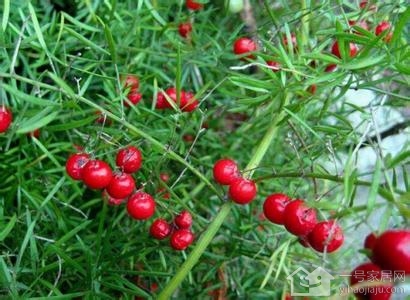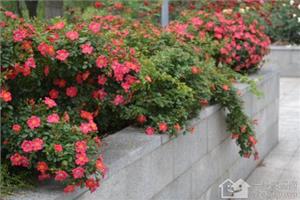What is the function of Tianmeng? the nutritional value of Tianmeng
Tianmen winter is generally dug in autumn and winter, washed, removed fibrous roots, boiled in boiling water or steamed to the heart, remove the skin while hot, wash, dry and set aside. In addition, the root tuber of Tianmendong is a commonly used traditional Chinese medicine, so it also has a lot of efficacy.

The efficacy of Tianmendong
Traditional Chinese medicine uses the root tuber of Tianmendong, a plant of Liliaceae. It has the following functions:
Anti-oxidation and anti-aging
The extract of asparagus has the effect of delaying aging, and asparagus polysaccharide has the activity of scavenging free radicals and anti-lipid peroxide.
Hypoglycemic
Tianmendong Jiangtang capsule can significantly reduce the blood glucose of alloxan hyperglycemic mice.
Antibacterial
The decoction has different bacteriostatic effects on Bacillus anthracis, type An and B hemolytic streptococcus, diphtheria, diphtheria, pneumococci, Staphylococcus aureus, Staphylococcus lemon, Staphylococcus Albus and Bacillus subtilis in vitro.
Anti-tumor
In vitro test (methylene blue method and Warburg respirator test), Radix Ophiopogonis could inhibit the dehydrogenase of leukocytes in patients with acute lymphocytic leukemia, chronic myeloid leukemia and acute monocytic leukemia. it can also inhibit the respiration of leukocytes in patients with acute lymphoblastic leukemia.
Antitussive and expectorant
Verified by animal experiments, Tianmendong has antitussive and expectorant effects.
The nutritional value of Tianmeng
Tianmen winter root contains 33% starch, 4% sucrose and other nutrients. The whole herb of Tianmen contains asparagine (asparagine), β-glutamic sterol, solid saponins, mucus, sugar aldehyde derivatives, 17 kinds of amino acids, rich vitamins, inorganic elements, daidzein, lactone, flavonoids, anthraquinones and cardiotonic glycosides. The root tuber contains 19 kinds of amino acids, such as citrulline, serine, threonine, proline, glycine, β-glutenol, 5-methoxymethylfurfural, glucose and fructose. The root tuber also contains a variety of oligosaccharides: triosaccharides, tetrapolysaccharides, pentosaccharides, hexosaccharides, octaglycans, nine polysaccharides and decosaccharides.
The above is the relevant introduction of this article, I believe you have a simple understanding of this after reading it, if necessary, you can continue to pay attention to the No. 1 home network for more information.
- Prev

The morphological characteristics of ground cover rose the culture method of ground cover rose
The morphological characteristics of ground cover rose the culture method of ground cover rose
- Next

Is the crabapple flower poisonous? can I keep it indoors?
Is the crabapple flower poisonous? can I keep it indoors?
Related
- Wuhan Hospital Iron Tree Blooming Result Was Instantly Frightened by the Gardener Master
- Which variety of camellia is the most fragrant and best? Which one do you like best?
- What is the small blue coat, the breeding methods and matters needing attention of the succulent plant
- Dormancy time and maintenance management of succulent plants during dormancy
- Minas succulent how to raise, Minas succulent plant pictures
- What are the varieties of winter succulent plants
- How to raise succulent plants in twelve rolls? let's take a look at some experience of breeding twelve rolls.
- Attention should be paid to water control for succulent plants during dormant period (winter and summer)
- Watering experience of twelve rolls of succulent plants
- Techniques for fertilizing succulent plants. An article will let you know how to fertilize succulent plants.

